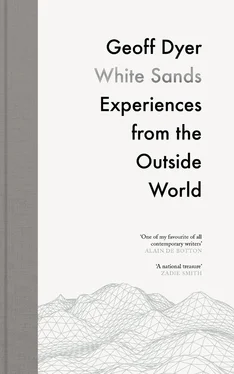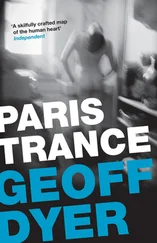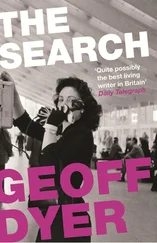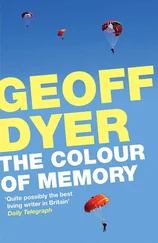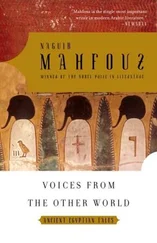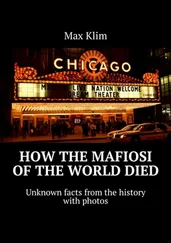This was one of the reasons why, after Rodia had moved on, the city of Los Angeles condemned his construction as unsafe. Having purchased the property for three thousand dollars in 1959, Cartwright and King devoted their energies to preventing the demolition of the towers. The campaign for their preservation in the face of the city’s insistence that they be torn down (before an earthquake caused them to topple over) resulted in a deal and a test. If the structures were able to withstand ten thousand pounds of pressure — the equivalent of a seventy-mile-per-hour wind — they would be allowed to stay. On 10 October 1959, cables were attached, and force was exerted and increased until, our guide explained, the cable snapped. When a new and stronger cable was found, either the crane to which it was attached broke or the truck doing the tugging tilted on the axis of its wheels. We were getting into a realm of variant specificity where the facts are adorned so decoratively as to acquire a suggestion of the miraculous. This is either the enemy of truth or the product of insufficient documentation. It is also a highly malleable proof.
A different kind of test of their ability to withstand potential damage came in August 1965, a few weeks after Rodia had died. During the Watts riots, when the neighbourhood was set ablaze, the towers remained untouched and unmarked. This is factually correct, but Rodia didn’t just leave Watts and give the towers to a neighbour because the work was complete: he was tired of battling the city for permits and fed up with vandalism. Also, Watts had changed, had, by the early 1960s, become almost exclusively African American. In her book Pop L.A ., Cécile Whiting writes that Rodia ‘seems to have envisaged the towers at certain times as a refuge from deteriorating conditions in Watts’ and ‘may have abandoned his home in 1955 because of the changing population around him.’ The irony is that after the uprisings the towers — spectacularly realized symbols of immigrant dreams — became resident totems of African American cultural expression and aspiration. ‘In other words, at virtually the same moment as the Watts Towers were preserved as part of the city’s cultural heritage, arguments broke out over whose heritage they represented.’ The malleability of the towers is such that they can surmount this perceived schism; their strength allows them to hold competing claims together like rope in a tug-of-love. Within a year of the uprising, they had become, according to a prestigious reporter for The New York Times —Thomas Pynchon, no less—‘a dream of how things should have been.’ The tense is crucial. Not how things might or will be in the future , but, with more than a touch of regret — even of nostalgia—‘should have been.’ It’s almost a corollary of the way the towers are always putting one in mind of something else: whatever one says always needs qualifying. Even loyal admirers would not claim them as an unqualified masterpiece. Unless. .
We are familiar with the idea of the work of art never being completed, only ever abandoned, but Rodia would seem to have abandoned his at the moment of completion. The moment of the towers’ completion was also the moment at which he was completed by his life’s work. In another sense, they are constantly being completed or fulfilled — by things like the Cherry album cover, by the visitors who come from all over the world, by the various festivals that take place here each year. (Explanatory panels on the fence stress the importance of the Gigli Festival held in Nola, Italy: ‘The Watts Towers resemble the icons used in the festival so closely that they are considered a likely inspiration for his work.’) Repairs have been needed, but the surprising durability of the original work was further enhanced and authenticated when it became apparent that, over the years, it was the repairs that needed repairing. The towers were more robust than the means employed to preserve them. Their capacity to create legends about themselves was self-generating and inexhaustible.
The wayward greatness of the towers — resolutely local and eccentrically universal — and the scale of Rodia’s achievement were attested to by admirers such as Buckminster Fuller and Jacob Bronowski (who in the course of describing a visit to the then unfenced towers in The Ascent of Man , declared them to be his ‘favourite monument’). Whether or not Rodia created a work of art is another question. Or at least the question ‘Is it a work of art?’ brings with it another: what kind of work of art might it be? There is the tacit belief here that ‘work of art’ is the ultimate proof of value and test of worth (more rigorous and demanding than the force exerted by the stress test), but one of the functions of the towers might be to resist or undermine this idea — to question the legitimacy of the question being posed. Maybe the towers are more than a work of art and the idea of art is not an adequate gauge by which to measure this kind of achievement.
The towers are unique, but as a phenomenon of determined, self-sufficient creation on an epic scale they are neither unprecedented nor without equal. John Berger has written about one such endeavour: ‘a palace passing all imagination,’ as the postman Ferdinand Cheval termed his creation in Hauterives, in the Department of the Drôme in France. Cheval (1836–1924) worked for thirty-three years single-handedly building and sculpting his ideal palace. ‘This work is naked and without tradition,’ writes Berger, ‘because it is the work of a single “mad” peasant.’ Viewed from Watts, however, the existence of Cheval’s palace means that there might be a tradition after all, even if it’s a scattered and meagre one. That Rodia was unaware of such a possibility enables us to identify one of this tradition’s defining elements as a lack of consciousness of such a tradition. Another is that other instances or components of that tradition remain unknown and uncelebrated by the world at large, and therefore unpreserved (to say nothing of the large number of such projects that, in spite of their creator’s best intentions, were never completed). Cheval’s reasonable boast—‘I have carved my own monument’—might provide an epigraph for all such lonely enterprises but, by definition, those words have to be re-conceived, recarved and re-written every time an individual pledges himself to an undertaking of this kind. Quotation is impossible, even if the message is the same.
Although our tour had started late it finished on time, in order to prevent a knock-on effect of delays. So our visit felt squeezed, hemmed in by time as well as by the security fence. We dragged our feet, took a last few sulky photographs before being marched back to the Visitors’ Center. Surprisingly, as we looked back at the towers, it was not the work of a kindred spirit such as Cheval that came to mind but one that was absolutely antithetical: a monument built by others at the command of a ruler who sought to impose his will on eternity itself. ‘Look on my works, ye Mighty, and despair!’ decrees Ozymandias in Shelley’s famous poem. Time destroys and makes nonsense of this vaulting ambition. All that remains of the ruler’s ambition are ‘two vast and trunkless legs of stone’ and a ‘shattered visage’ amid the lone and level sands stretching far away. Rodia’s ambition was just ‘to do something big.’ It wasn’t even an ambition as usually understood. E. M. Cioran claims that the mole blindly burrowing his tunnel is ambitious, that ‘life is a state of ambition,’ but, as usually understood, ambition always has some goal beyond the satisfactions afforded by the task itself: acclaim, recognition, fame, money. Contra Adorno, building the towers would seem to have been Rodia’s hobby, something he did with his free time — albeit something he pursued with unswerving single-mindedness. That’s where Adorno is wrong about hobbies: a hobby can become the defining purpose of one’s life, the thing that gives it meaning even if — as in Rodia’s case — one is obliged to spend the bulk of the day doing something else to earn a living, to buy that time. He did all the work himself, he said, because it would have been too complicated — more trouble than it was worth — to explain to someone else what he was trying to do. Possibly he didn’t entirely know what he was doing. Even his claim that ‘You’ve got to do something, they’ve never got ’em in the world,’ came after the fact, after he was done. So maybe there was something akin to Garry Winogrand’s compulsive credo—‘I photograph to find out what something will look like photographed’—about the undertaking. He built the towers to find out what they would look like built.
Читать дальше
